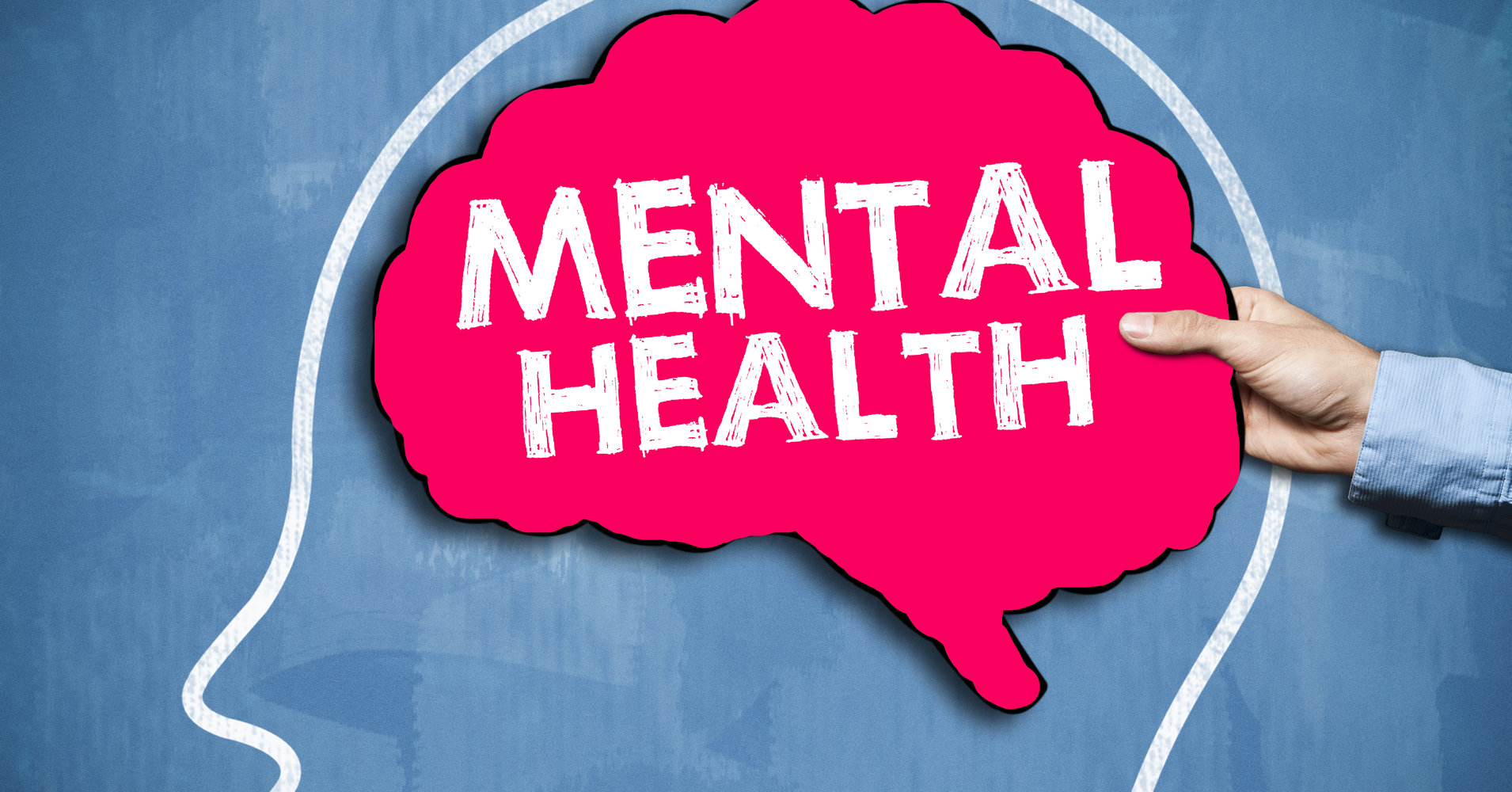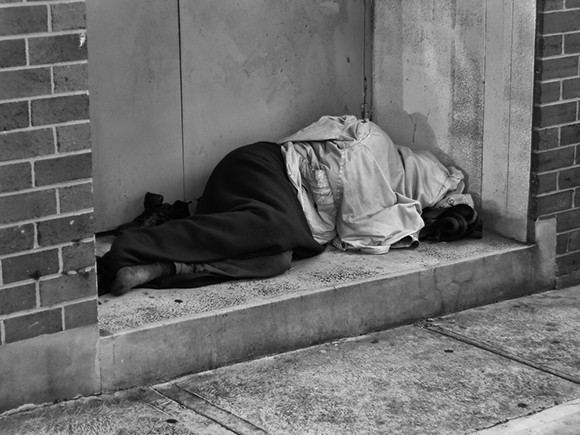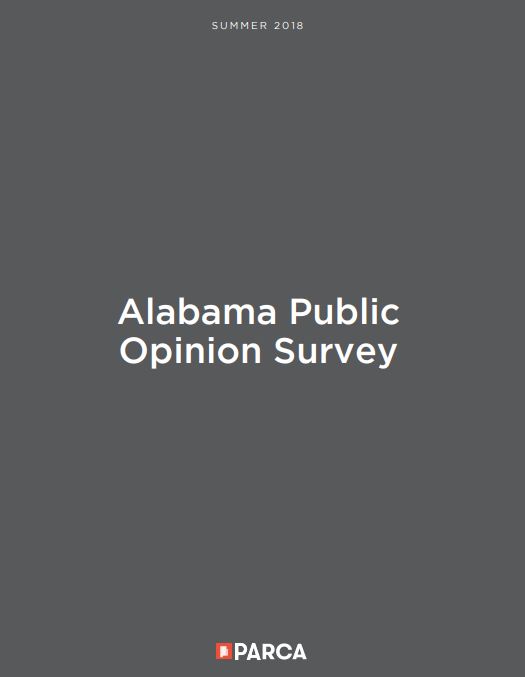
In late 2017, the Public Affairs Research Council of Alabama (PARCA) surveyed Alabama voters to determine their thoughts about the general direction of the state and the issues that most concern them. PARCA partnered with Samford University to survey policy professionals from across the state including academics, journalists, business and nonprofit leaders, and lobbyists. Their responses provided a list of 17 critical issues facing Alabama. PARCA partnered with USA Polling at the University of South Alabama to ask registered voters about these 17 issues. The voters’ responses generated the Top Ten list of voter priorities. Details about the survey and its methodology can be found in the full Alabama Priorities report.
Alabama Priorities
| 1. K-12 Education |
| 2. Healthcare |
| 3. Government Corruption and Ethics |
| 4. Mental Health and Substance Abuse |
| 5. Poverty and Homelessness |
| 6. Jobs and the Economy |
| 7. Crime and Public Safety |
| 8. Job Training and Workforce Development |
| 9. Improving the State's Image |
| 10. Tax Reform |
Key Findings
- Voters broadly agree on the critical issues facing the state.
- Voters are not polarized along traditional political, ideological, racial, or generational lines. There is a significant gap between the priorities of experts and the priorities of voters.
- Policymakers have an opportunity to inform and educate voters on critical and systemic challenges facing the state.
- Policymakers have an opportunity to respond to immediate, often highly personal issues that concern voters.
- Elected officials and candidates have an opportunity to show leadership and to build broad coalitions to address Alabama’s most pressing challenges.
This summer and fall, PARCA will produce summary briefs on each of the top ten priorities chosen by Alabama voters. Each brief will answer four critical questions: what is the issue, why it matters, how Alabama compares, and what options are available to Alabama policymakers.
#4: Mental Health and Substance Abuse
What is the issue?
Alabama voters rank mental health and substance abuse as the 4th most important issue facing Alabama, with 56% of respondents indicating they were very concerned about the issue. A plurality of Millennials and majority of voters of every other generation are very concerned about the issue. These findings are in keeping with the State’s Community Health Improvement plan, which found Alabamians rank mental health as the second greatest health concern.[1]
Mental illness includes a range of mental health conditions from mild anxiety, treatable with counseling, all the way to major psychiatric issues requiring psychotropic medication and long-term hospitalization.
An estimated 43.6 million Americans from all backgrounds suffer from mental illness or substance abuse. If current trends continue, by 2020, there will be more people suffering from mental and substance abuse disorders than people suffering from all physical diseases worldwide.[2]
Mental illness and substance abuse disorders share some underlying causes, including changes in brain composition, genetic vulnerabilities, and early exposure to stress or trauma.[3] Individuals that suffer from drug addiction frequently experience one or more symptoms of mental health issues.[4]
Experiencing both mental illness and substance abuse, what professionals call a dual-diagnosis, is very common.
Why Does it Matter?
Mental illness and substance abuse can alter reasoning skills, coping mechanisms, emotions, and behavior. This can have a profound impact on the individual and family, but also on the broader society.
Serious and untreated mental health concerns, including substance abuse, can place a strain on the communities by increasing unemployment, crime, and healthcare costs. Substance abuse alone has been estimated to cost $504 billion in direct and indirect costs, including lost productivity, in 2015 alone.[5]
Left untreated, mental health and substance abuse disorders can hinder an individual’s ability to live a healthy, confident life, and the ability to be productive members within the community. Untreated mental health and substance abuse issues can be significant contributing factors to job loss, homelessness, criminal behavior, and premature death. Suicide and drug-related deaths have increased in the nation in recent years with suicide ranked 11th in 2014 as the leading cause of death.[6]
More than one in four adults living with a severe mental health issue is also struggling with substance abuse issues. The effects on the communities can have direct and indirect consequences. “Direct consequences can include injuries, social and legal problems, impaired health, overdose, deaths, and babies born with neonatal abstinence syndrome. Indirect consequences include higher health care costs, the spread of infectious diseases, drug-related crime, interpersonal violence, unintended pregnancy, and stress within families.”[7]
How Does Alabama Compare?
Mental health care and substance abuse are critical issues in Alabama. In 2014, Mental Health America ranked the fifty states and Washington, D.C. in a number of mental health categories.[8] Overall, in the composite ranking of 15 mental health metrics, Alabama ranked 41st, ahead of neighboring states South Carolina, Tennessee, Mississippi, but behind North Carolina, Florida, Arkansas, and Louisiana. Georgia led all Southeast states at 26. Alabama ranked 27th in overall adult mental health and 28th in overall youth mental health. Looking at individual components, Alabama ranked:
- 30th in the number of adults suffering from any mental illness;
- 18th in the number of adults suffering from acute suicidal ideation;
- 9th in the number of youth suffering from a major depressive episode in the previous year;
- 42nd in the number of adults diagnosed with any mental illness without insurance, representing 20.8% of the adult population; and
- 48th in overall access to care, ahead of only Texas, South Carolina, and Mississippi.
In spite of all this, less than half (43.5%) of adults in Alabama living with mental illness have received any form of treatment.[9]
Alabama now faces the daunting task of combating the opioid crisis. In 2013, Alabama had the highest per capita number of opioid prescriptions in the country – 141.1 per 100 compared to the national average of 79.3 per 100 people. Since then, the rate has dropped to 120.3 per 100 in 2015 – but this number still represents 1.2 prescriptions for every man, woman, and child in Alabama.[10]
While Alabama ranks 34th in deaths from drug overdose, the number of overdose deaths continue to climb: from 169 in 1999 to 756 in 2016, a 347% increase.[11]
Lack of accessible care and lack of sufficient insurance coverage for substance users exacerbates the issue. There is a high correlation between availability of preventative mental health services and mental health treatment. Alabamians have less access to mental health services than do residents of many other states.
What Can We Do?
Access to Care
One of the most significant factors facing mental health and addiction treatment in Alabama is simply the lack of access. Alabama has one mental health provider for every 1,180 people. Mental health providers include psychiatrists, psychologists, licensed clinical social workers, counselors, marriage and family therapists, and advanced practice nurses who specialize in mental health. However, at the county level, the ratio ranges from 270:1 (Macon County) to 33,840:1 (Chambers County).[12] Focusing on just substance abuse, statewide, there are 505 beds for residential and high-intensity residential substance abuse treatment – and these beds are located in just 13 counties. There is a waiting list of 319 people.
Individuals without insurance may wait for months to see a mental health professional. More often than not, this results in a crisis that ends with the individual in the hospital or jail. In effect, Alabama’s hospital emergency departments, jails, and prisons serve as de facto mental health providers. At the same time, while most people know how to access physical health care, people may be less familiar with when and how to access mental health care.
- The state could expand Mental Health First Aid, described as ‘CPR’ for mental health, and Crisis Intervention Training for law enforcement personnel.
- The state could also explore a waiver, which would allow Medicaid to fund treatment of substance abuse.
- The state could explore expanding access to substance abuse treatment, particularly residential treatment. There are currently no substance abuse facilities, public or private, in Autauga, Bullock, Coosa, Lawrence, Lowndes, Perry, Washington, or Wilcox Counties.
Mental Health Workforce
Access is largely, but not exclusively, a function of size of the mental health workforce. Alabama faces a growing workforce shortage in many industries, including mental health services. There is a particular shortage for trained professionals serving the elderly. Unaddressed, this shortage will escalate as the senior population is growing faster than other age groups.
- The state could explore incentives to attract and retain mental health professionals.
- The state could explore licensure regulations to allow all medical professionals to practice at the highest levels of their training and certification.
Social Stigma
Mental health experts recognize that even if there were sufficient mental health providers, there is still a significant stigma attached to accessing treatment for mental health or substance abuse issues. Moreover, often when treatment is sought, the individual is already in a state of crisis, rather than seeking care earlier.
- The state could seek to reduce the stigma by promoting and expanding peer programs—mental health services led by, or in conjunction with a person who has experienced mental illness himself or herself.
- The state could develop an awareness campaign for the general public.
Standards of Care
There are a number of evidence-based and standards of care treatments that could be considered for expansion or modification in Alabama.
- The use of medication to treat opioid addiction could be expanded.
- The state could require healthcare professionals who prescribe medication treatment for addiction, do so only in consultation with a trained mental health professional.
- The number of state-funded residential beds for substance abuse treatment could be expanded.
- The number of nonprofit or low-cost methadone clinics for those with heroin addictions who suffer multiple relapses could be expanded.
- The state could create a harm reduction program for opioid users, which includes education, counseling, referrals to treatment, and needle services and which has been shown to reduce the spread of HIV and Hepatitis C and increase the likelihood an individual will seek treatment.
- The state could expand mental health and substance abuse treatment in the corrections system, which could also help reduce recidivism rates.
Drafted by Anita Perry, graduate student, Department of Social Work, Samford University, and the staff of the Public Affairs Research Council of Alabama.
Full PDF report available here.
[1] Alabama Department of Public Health, State of Alabama Community Health Improvement Plan (2015), http://www.adph.org/accreditation/assets/CHIP_2015_RevAugust.pdf.
[2] Rosenberg, L. 2012. “Behavioral disorders: the new public health crisis.” Journal of Behavioral Health Services & Research 39(1):1-2.
[3] U.S. Department of Health and Human Services, “Mental Health and Substance Use Disorders” (2017), https://www.mentalhealth.gov/what-to-look-for/mental-health-substance-use-disorders.
[4] U.S. Department of Health and Human Services, “Mental Health and Substance Use Disorders” (2017), https://www.mentalhealth.gov/what-to-look-for/mental-health-substance-use-disorders.
[5] U.S. Department of Health and Human Services, Substance Abuse and Mental Health Services Administration, Facing Addiction in America: The Surgeon General’s Report on Opioids (2018), https://addiction.surgeongeneral.gov/sites/default/files/surgeon-generals-report.pdf.
[6] U.S. Department of Health and Human Services, Substance Abuse and Mental Health Services Administration, Facing Addiction in America: The Surgeon General’s Report on Opioids (2018), https://addiction.surgeongeneral.gov/sites/default/files/surgeon-generals-report.pdf.
[7] Walden, Nicole. “The Opioid Crisis in Alabama” Alabama Department of Mental Health, November 27, 2017, http://www.alabamapublichealth.gov/alphtn/assets/112717handouts.pdf.
[8] Mental Health America, “The State of Mental Health in America, 2018” (2018), http://www.mentalhealthamerica.net/issues/state-mental-health-america.
[9] U.S. Department of Health and Human Services, Substance Abuse and Mental Health Services Administration, Behavioral Health Barometer Alabama, 2015, (2015), https://www.samhsa.gov/data/sites/default/files/2015_Alabama_BHBarometer.pdf.
[10] National Institute on Drug Abuse, “Alabama Opioid Summary” (2018), https://www.drugabuse.gov/drugs-abuse/opioids/opioid-summaries-by-state/alabama-opioid-summary
[11] U.S. Department of Health and Human Services, Centers for Disease Control, “Drug Overdose Mortality by State: 2016” (2018), https://www.cdc.gov/nchs/pressroom/sosmap/drug_poisoning_mortality/drug_poisoning.htm
[12] Robert Wood Johnson, 2018 County Health Rankings, (2018), http://www.countyhealthrankings.org/app/alabama/2018/measure/factors/62/map



